Most Primorje-Gorski Kotar Schools Closed as Coronavirus Cases Rise
March the 22nd, 2021 - As the coronavirus pandemic rages on and an increase in the infection rate in one Croatian county has been duly noted, Primorje-Gorski Kotar schools, at least the majority of them, have closed their doors today.
As Poslovni Dnevnik writes, the Croatian county of Primorje-Gorski Kotar currently has the most active cases of infection in all of the country. Due to the upward trend in the number of infected individuals in Primorje-Gorski Kotar County - the local civil protection headquarters had to tighten its approach to combating the pandemic. Today, most Primorje-Gorski Kotar schools will remain closed.
For more than 120 days, this Croatian county has been recording more than 200 newly infected people per day. The number of active cases of SARS-CoV-2 infection exceeded 1,800, and most of those infected are among the local working population - 60 percent of them, and 16 percent of them are local school children, HRT reported.
Mladen Sculac from the Civil Protection Headquarters of the aforementioned county says that they expect that the new measures that come into force today will bring good results.
"Restrictions on classes for students from the 4th to 8th grade of primary school and for secondary schools will come into force, while students from 1st to 4th grade will continue to have their classes live. A proposal was made to the National Civil Protection Headquarters to limit the number of employees at any one time in the workplace or to introduce shift work. We expect that these measures will show good results,'' he said, adding that if these measures don't provide the desired results, then measures will need to be tightened.
"We hope that our citizens and employers will be disciplined in adhering to these measures," said Sculac, adding that the closure of cafe terraces will also happen if these measures aren't properly respected.
The intensified supervision of the operation of such catering facilities is also expected, and the closing of terraces will follow if the measures are violated. The Primorje-Gorski Kotar Police Department inspected 1,274 catering facilities, found 20 people violating self-isolation and issued 9 misdemeanor notices, the State Inspectorate intervened 30 times, and the Civil Protection Office carried out 180 inspections of the current epidemiological measures, reported HRT.
For the latest travel info, bookmark our main travel info article, which is updated daily.
Read the Croatian Travel Update in your language - now available in 24 languages.
HRK 17.5 Million Set Aside From State Budget To Upgrade Ports in Primorje-Gorski Kotar County
ZAGREB, 11 March, 2021 - Several contracts, worth 17.5 million kuna, for reconstruction of seaports and waterfronts in the broader Rijeka area were signed on Thursday by Sea and Transport Minister Oleg Butković and local authorities.
The contracts envisaging the upgrade of ports on the islands of Krk, Rab and Lošinj as well as the coastal cities of Bakar, Mošćenička Draga, Novi Vinodolski, Crikvenica and Kraljevica are part of the Croatian Coast Renaissance project in which two billion kuna has been invested to date, and the lion's share of this amount has been ensured from EU funds.
Minister Butković said today that investments in seaport infrastructure would continue.
(€1 = HRK 7.582776)
For more about politics in Croatia, follow TCN's dedicated page.
Six-Party Coalition to Run in Local Elections in Primorje-Gorski Kotar County
ZAGREB, 9 March, 2021 - Representatives of the Social Democratic Party, the Croatian Pensioners' Party, the Primorje-Gorski Kotar Alliance, the Istrian Democratic Party and the Croatian Peasant Party on Tuesday agreed to run together in local elections set for May, their candidate for county head being Zlatko Komadina.
Social Democrat Komadina, who serves as the head of Primorje-Gorski Kotar County, said the six-party coalition had decided to stay together after its current term as the ruling coalition at the county level.
Darijo Vasilić, leader of the Primorje-Gorski Kotar Alliance (PGS), said that the coalition had implemented 84 EU-funded projects worth HRK 300 million, investing in infrastructure, ports, the school system, health and other activities within the remit of county authorities.
Komadina said his SDP party would run in all 36 local government units in the county, nominating its own candidates for mayors or municipal heads or supporting PGS or independent candidates.
For more about politics in Croatia, follow TCN's dedicated page.
Ban On Operations Forces Beloved Rijeka Club Crkva To Close Forever
February 3, 2021 – With heavy hearts, Rijeka's only electronic and underground music club Crkva announced its permanent closure today. It was a huge supporter of arts, culture, music and minorities for both the city and the region and will be greatly missed
While independent business owners and entrepreneurs took to the main square of Zagreb in protest at the perceived inequality in Coronavirus measures and their enforcement, 160 kilometres away on the Kvarner coast, the ban on operations for catering and entertainment venues was forcing a very hard decision.
Beloved Rijeka club Crkva today announced its permanent closure. The news will be taken with great sadness by not only the young people of Rijeka and the students who live there for university but to clubbers across Croatia and the many visitors who have passed through its doors. Within the nightlife offer of the vibrant city of Rijeka, Club Crkva was unique.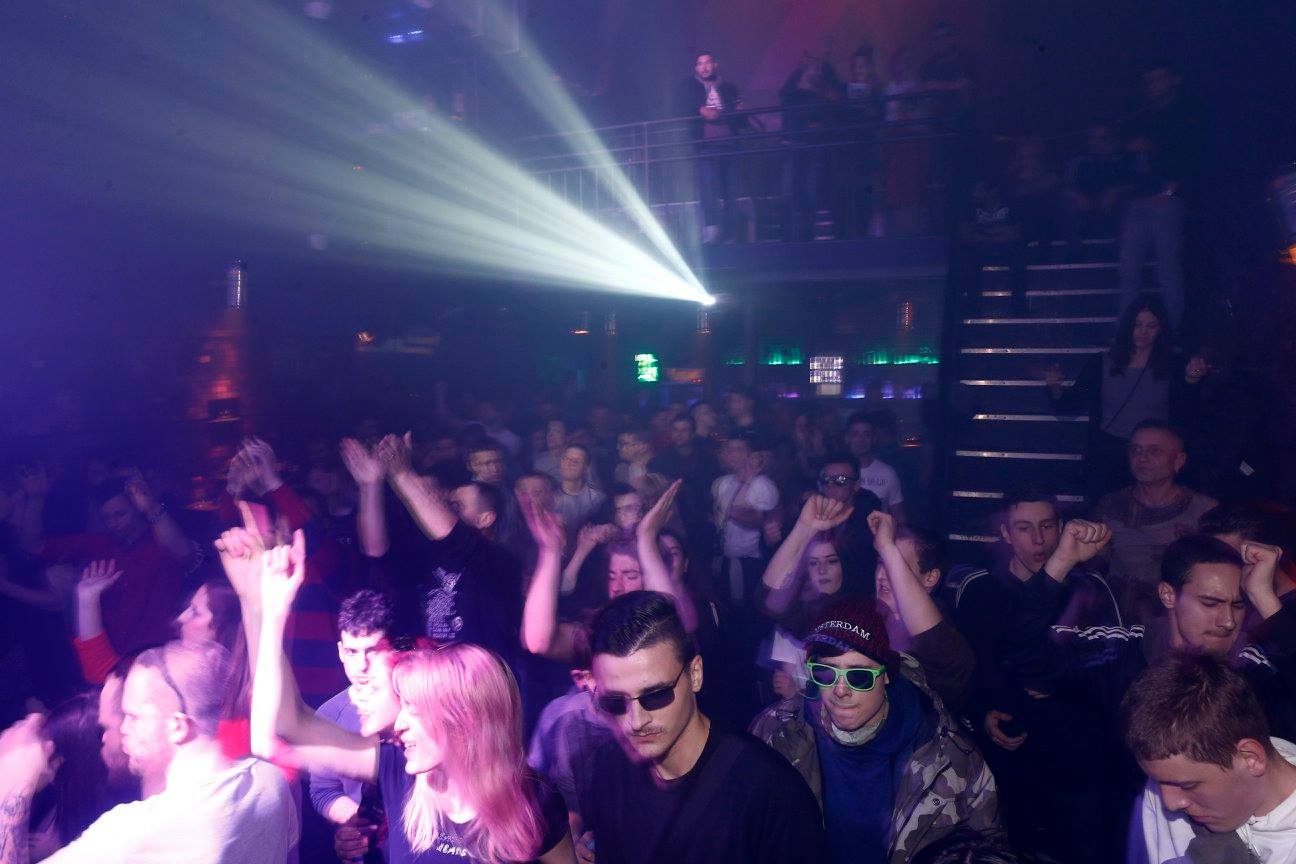
“Thank you for every dance, smile and happiness, thank you for every arrival and every morning we welcomed together. Thank you to all the artists who have performed here, thank you to those who have not, and yet they have filled our sacred chambers with their sound.” wrote club Crkva's Sasa Jovanovic in a clearly emotional Facebook post this afternoon.
Club Crkva was Rijeka's only dependable weekly club offering late-night electronic and underground dance music. Every major city in the world has at least one place like club Crkva, which puts it on the international music map. Now, Rijeka has none.
The club gave countless opportunities to young Croatian DJs and promoters, never dictating a style on the enthusiasm and ideas of the up-and-coming clubbing generations. It hosted house and techno, drum n' bass, breaks and any other style you might find in a big city's underground music club. After the closure of the irregular Hartera happenings, club Crkva was the only nightclub in Rijeka to regularly be visited by internationally-renowned DJs. It also played host to all of the biggest names of regional talent.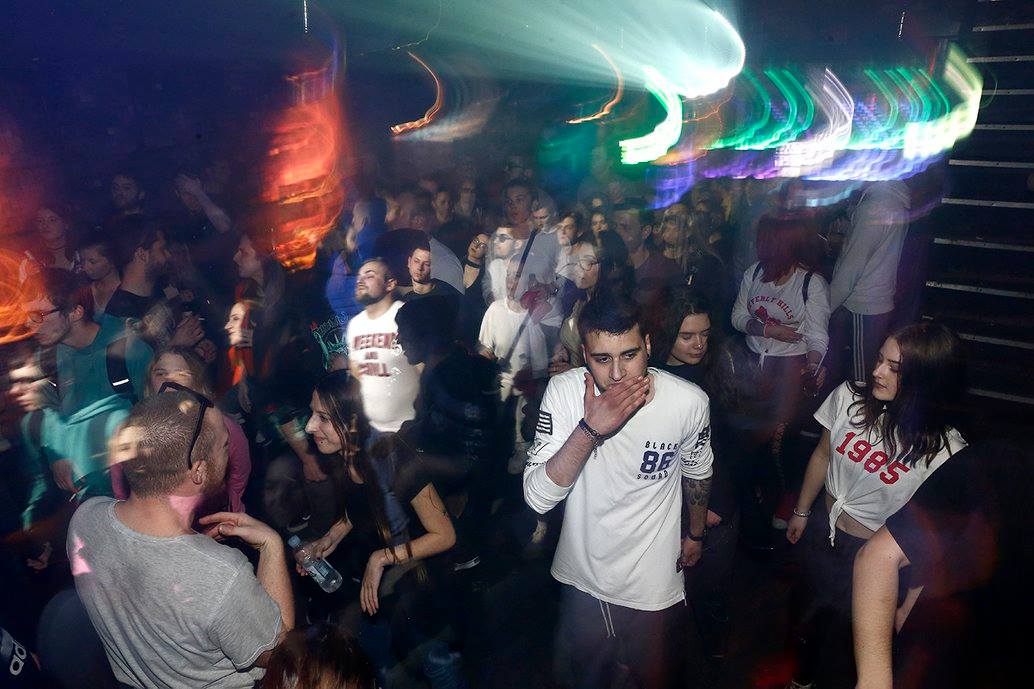
Club Crkva proudly and actively supported arts and culture programmes born in the local community, many of whom were simply independents who had a great idea they were passionate about. The club was due to host several key happenings in the Rijeka European Capital of Culture 2020 year until the pandemic put pay to much of the programme. Many will also remember club Crkva as a committed supporter of the city's gay and minority communities. It regularly opened its doors to members of the region's gay, lesbian and feminist movements who asked to throw parties there.
“Thanks to our stewards, all the staff and friends. We created beautiful memories and wrote a history of world-class Rijeka and regional clubbing, “ Mr Jovanovic continued. “What I regret the most is that we will not say goodbye at one last big party.”
“One thing is for sure, if this pandemic is a difficult path to a better, more honest and more advanced society, then let this Church of ours be sacrificed for it and let all the energy we have produced here for years be used for that purpose.”
All internal images © Club Crkva
PHOTOS: New Rijeka Urban Parks Just One Lasting Legacy of ECoC 2020
January 27, 2021 – Rising sharply up into the foothills, little space in the expansion of Rijeka was left for green and community recreation areas. New Rijeka urban parks address the issue and are just one lasting legacy of ECoC 2020
The preparations for Rijeka European Capital of Culture 2020 were years in the making. Community consultations and contributions for every aspect of the arts, each venue and city institution put their enthusiasm behind the project. And that's without even mentioning all the international contributors whose work was commissioned. It really did feel like the whole city had come together to show the best of themselves in Rijeka's special year. Except, 2020 turned out to be special for all the wrong reasons.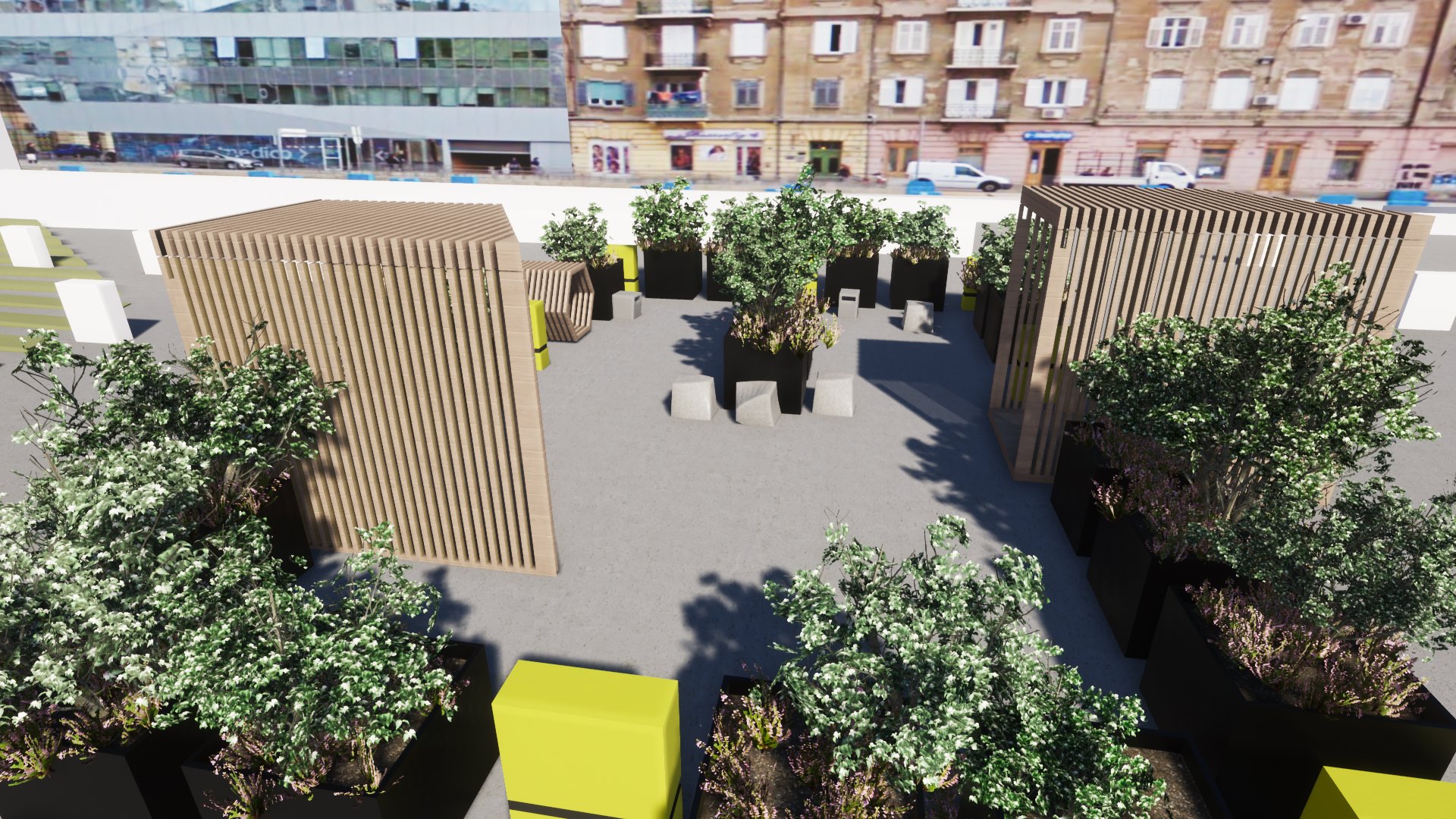
European authorities granted the European Capital of Culture status to Rijeka for extra months in order to allow them to complete some programs halted by the pandemic. Not that it much helped increase the footfall the vast project was meant to attract to the Kvarner capital's streets. Instead, the streets lay bereft of guests, visited only by Rijeka residents. But, that's not such a bad thing.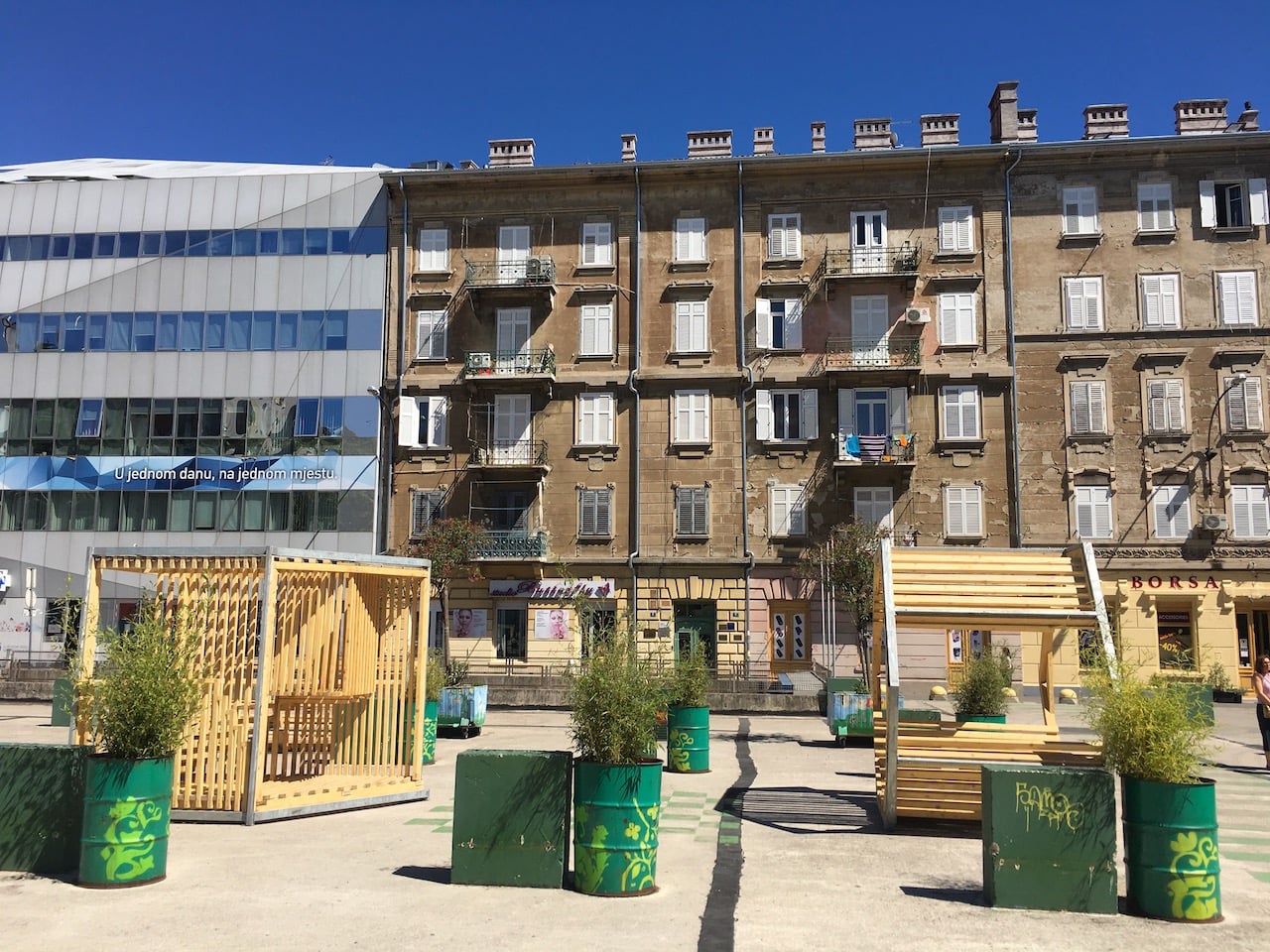
The Capital of Culture has never been awarded solely to help a city attract visitors. Nor is it ever intended to make its mark over just one year. A lasting legacy for the city's current and future residents is perhaps the most essential element of the event. And, though crippled by Corona, Rijeka European Capital of Culture 2020 is staying true to its promise to do so. New Rijeka urban parks and public recreation areas are just some of the benefits ECoC 2020 will leave behind.
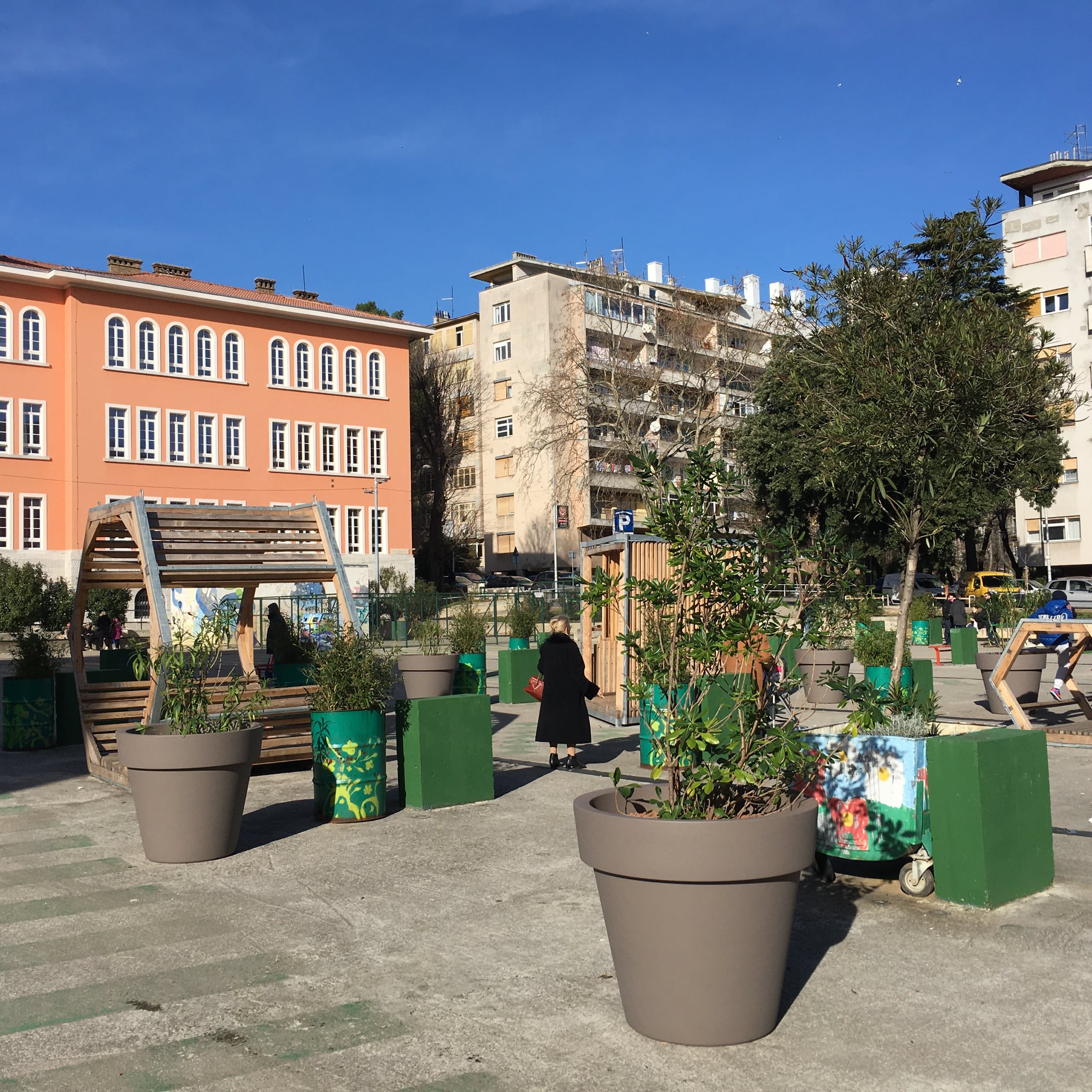
Rijeka is a great city. But, it's a weird place. An anomaly on the Croatian coast, it boasts none of the quaint olde worlde architecture you usually find around the Mediterranean, Croatia included. It's grand Austro-Hungarian facades and palaces are much more like the Croatian capital. Behind them the city rises sharply up into the foothills, modern residential blocks shooting skywards and peering over the centre below. As Rijeka has grown like moss up this hillside, little room has been left for greenery and areas of recreation. Goodness knows, the best spot you might find for a picnic in Rijeka is the cemetery! (Kozala – actually, as far as places full of dead people go, it's actually very nice)
The new Rijeka urban parks try to address the imbalance of work to recreation space city residents have. While it may not be possible to create a vast landscape of lawns and a forest of trees in the city centre, the new Rijeka urban parks and public areas look to use modern solutions and the places they have, to create spaces where everyone can socialise, play, relax or meet up.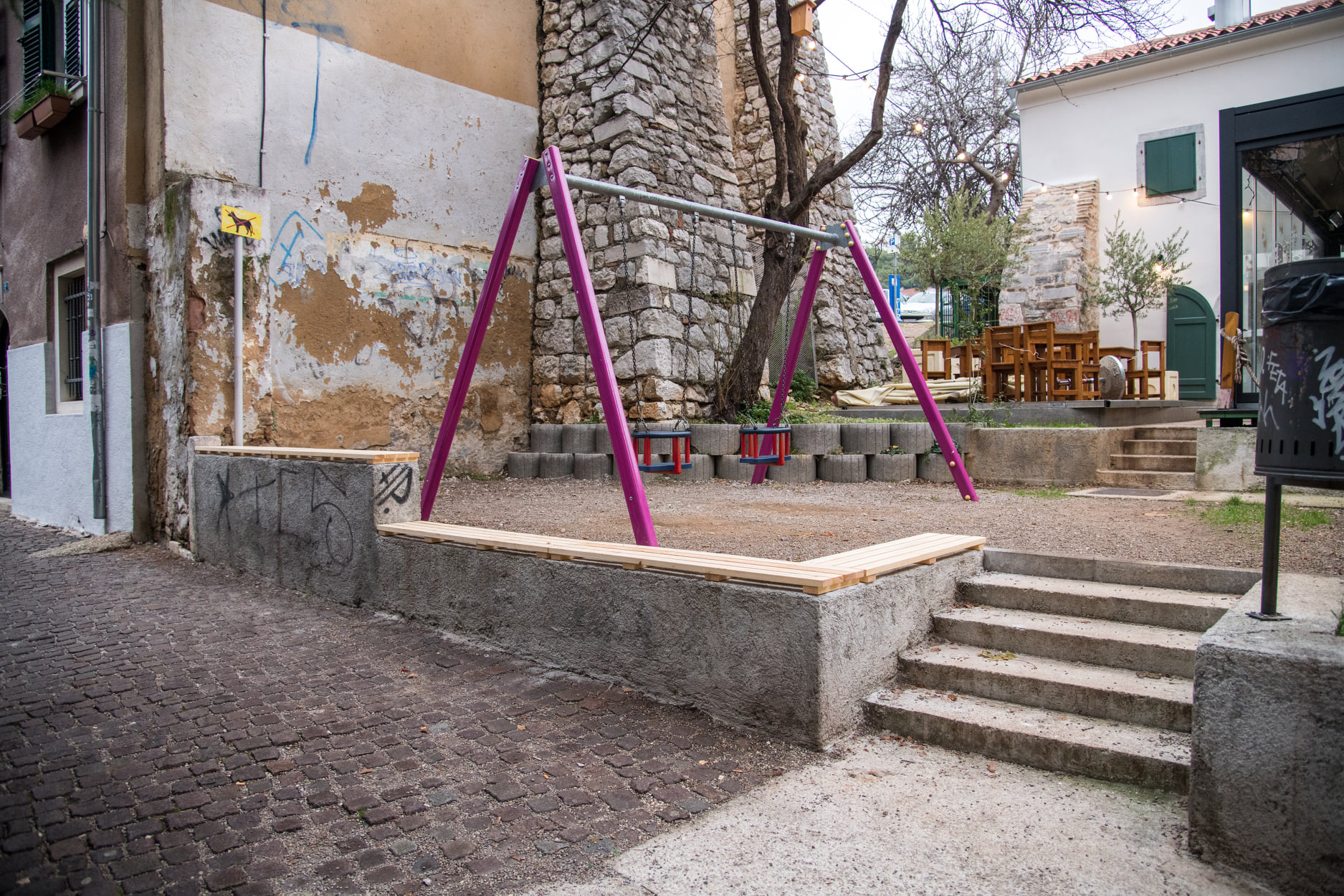
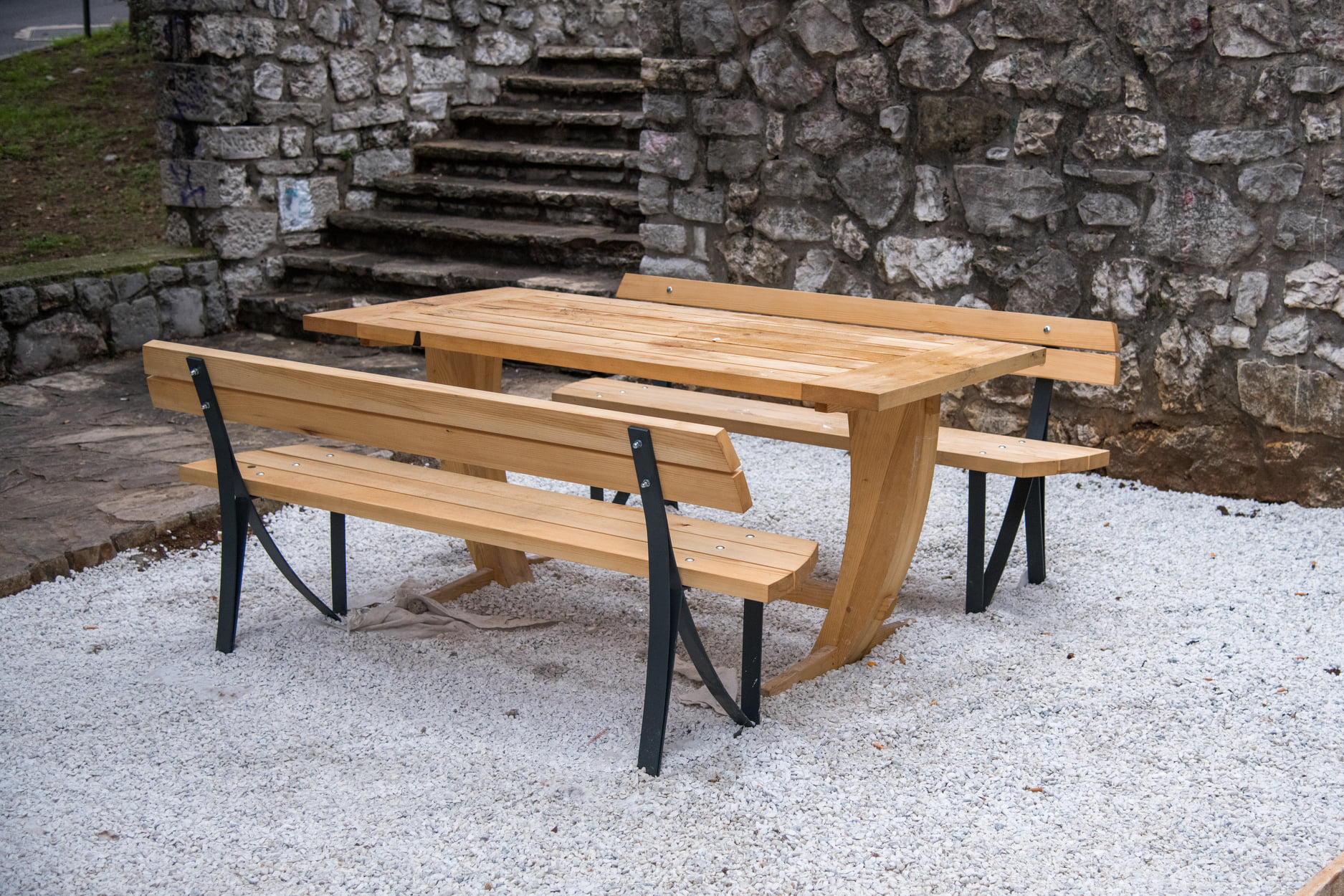
Under several different programs within European Capital of Culture 2020, members of the Association for the Promotion of the Quality of Urban Life 'Urbani separe' worked on the new Rijeka urban parks in July 2020 and again between December 2020 and January 2021. In a relatively short space of time, we think they've done a great job.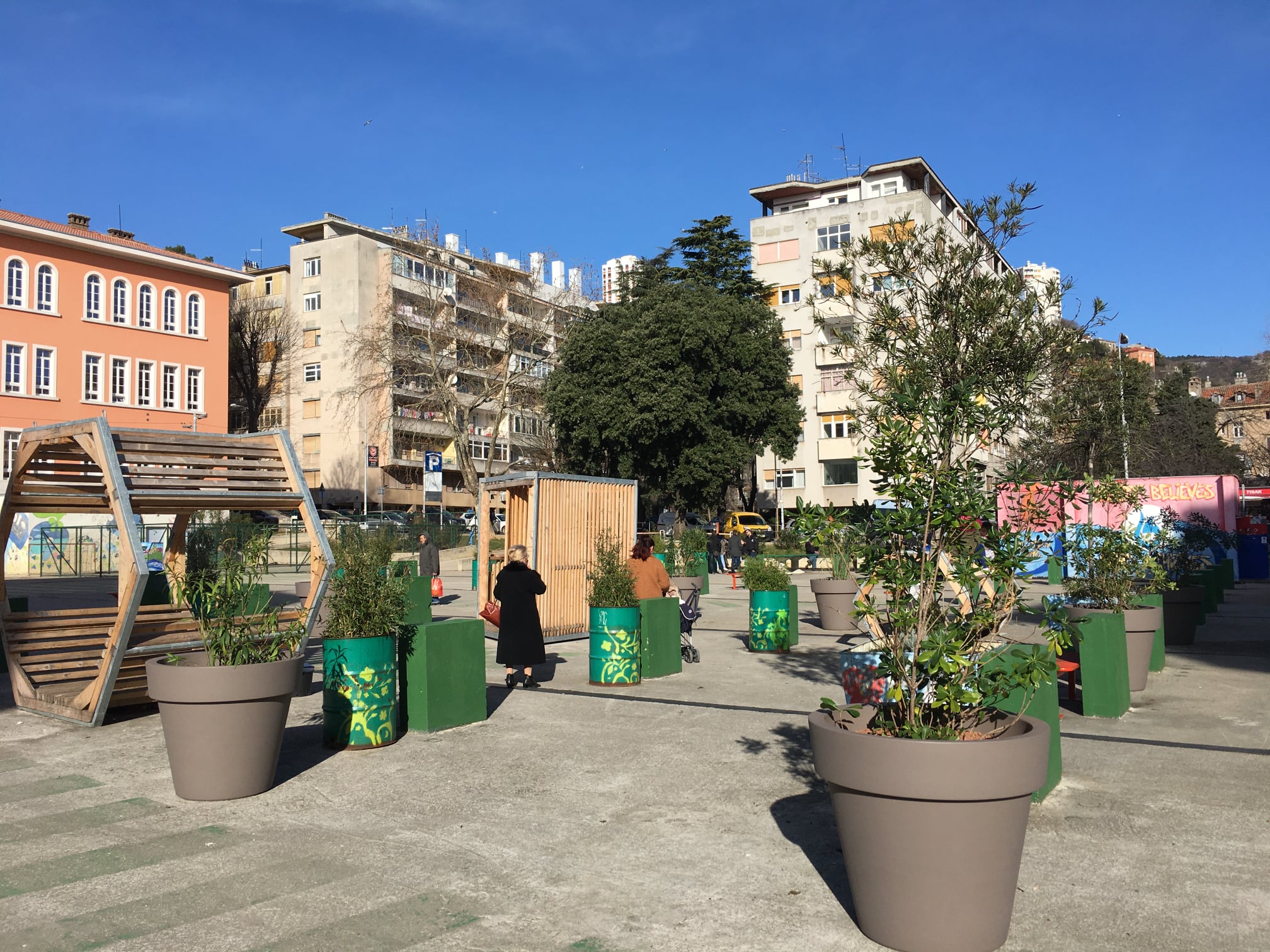
All images © Urbani separe / Rijeka 2020
FIRST PHOTOS: New Rijeka Hilton Costabella Beach Resort & Spa Complete
January 27, 2021 – They promised its arrival this spring and, true to their word, these first-look photos show the construction of the beautiful new Rijeka Hilton Costabella Beach Resort & Spa is complete
With an investment of €80 million and the keen co-operation of the city authorities, the arrival date of the new Rijeka Hilton Costabella Beach Resort & Spa was never in doubt. They said it would be ready for spring and due to open its doors in April. As these first look pictures show, they've been true to their word. Construction of the new Rijeka Hilton Costabella Beach Resort & Spa is complete.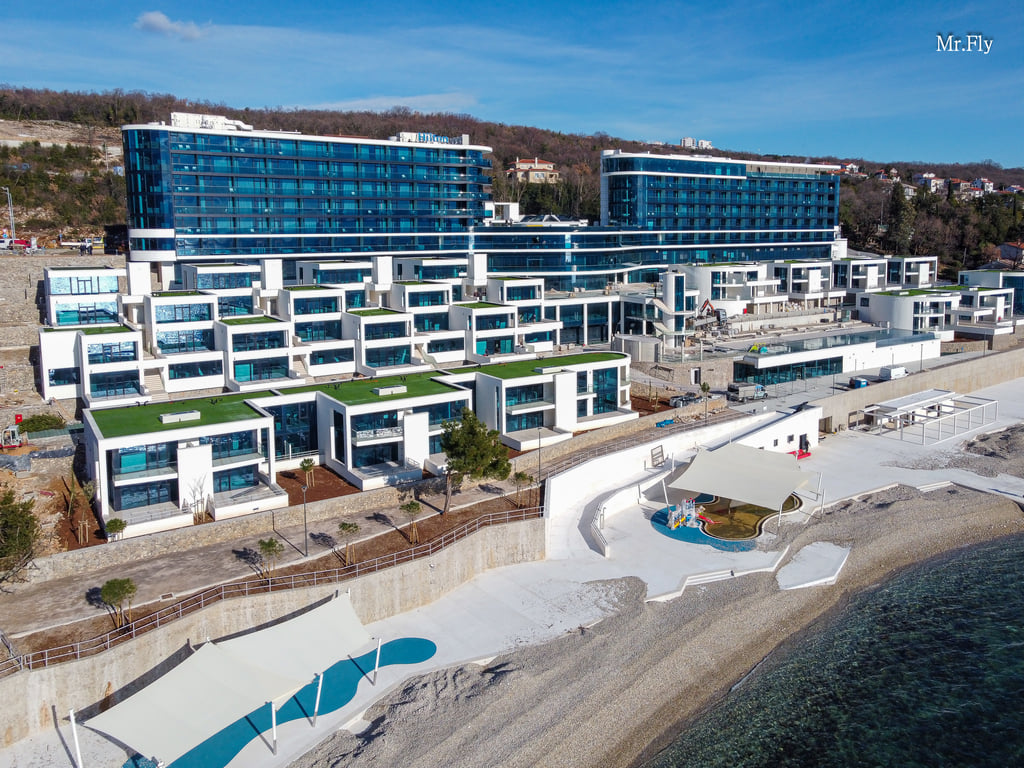
Its been at times difficult to fully visualise the completed project from the glossy, computer-generated builders' images of how they predict the finished product will look. Rijeka residents too have had their worries – would the new promenade in front of the complex (paid for with city money) place a section of their beloved coastline off-limits to those not staying at the Rijeka Hilton Costabella Beach Resort & Spa?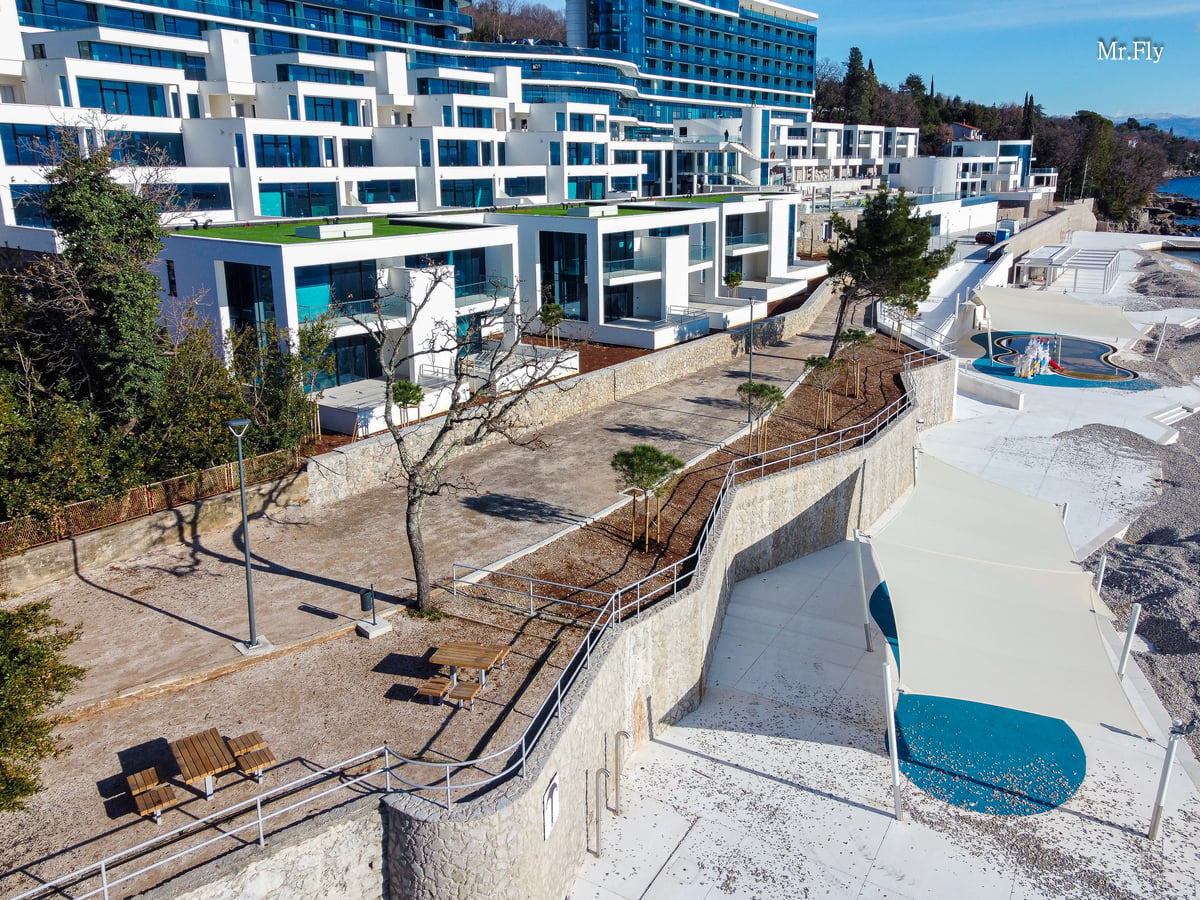
They needn't have worried. As these new images show, the major construction work at the Rijeka Hilton Costabella Beach Resort & Spa is complete. It looks as though they could throw open the doors tomorrow. The worried-over promenade snakes between the main complex and the hotel residents' beach area. It allows pedestrians full access to the seafront – they can pass along the entire front facade of the Rijeka Hilton Costabella Beach Resort & Spa and enjoy the view from the shore just as much as hotel residents. When the Rijeka Hilton finally opens its doors, they'll also be able to take advantage of all of its spa facilities too, which will be opened up to local residents via a membership scheme.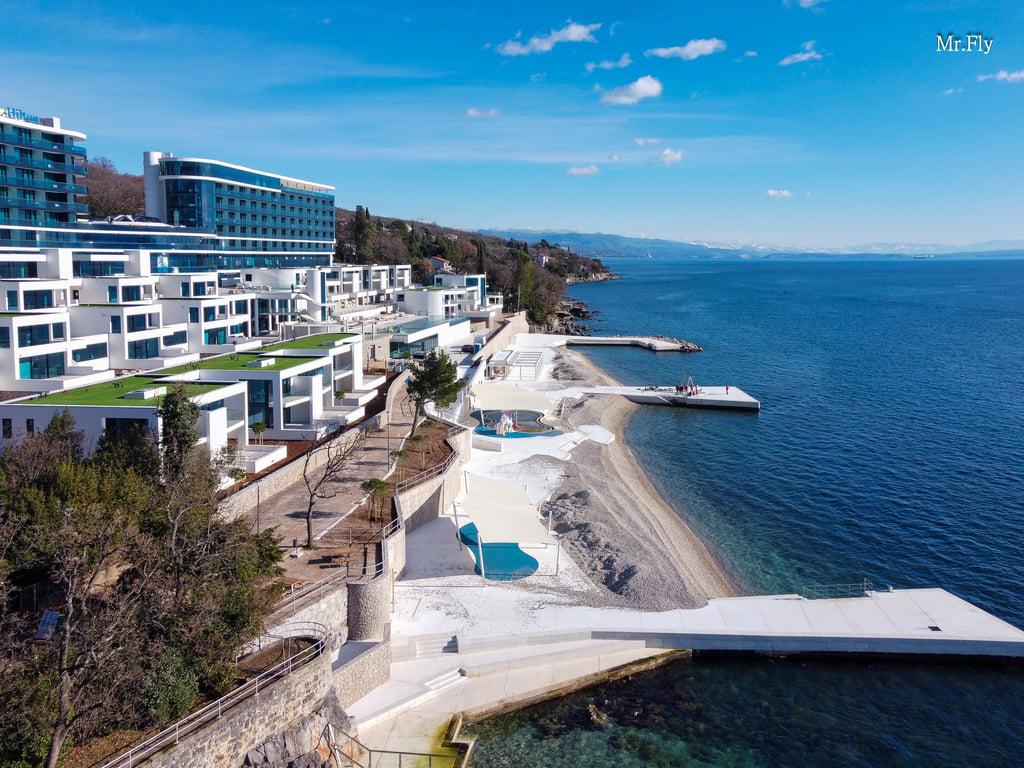
The Rijeka Hilton Costabella Beach Resort & Spa complex has been built across a considerable 18,000 square metres. The main building complex has 10 floors which hold 132 rooms. The site also has 66 villas separate to the main building, six restaurant/bar/food outlets, a private beach, and one of the largest wellness facilities in the region - the two-floored spa area covers more than 3,000 square metres.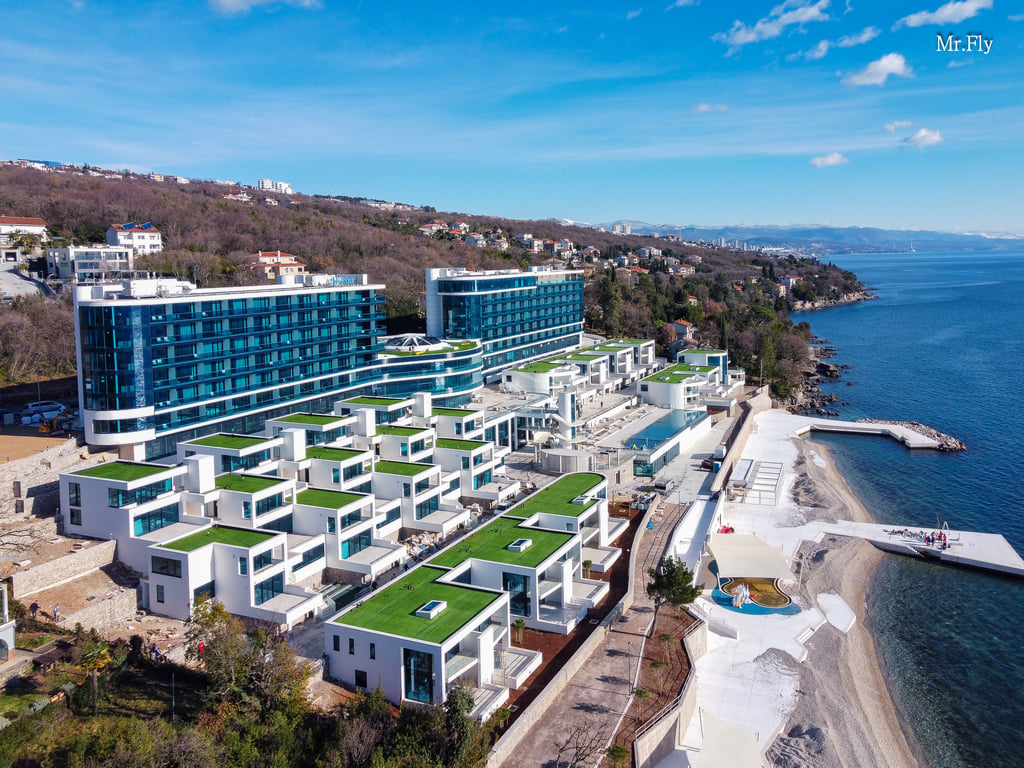
The new photos of the complete Rijeka Hilton Costabella Beach Resort & Spa, which are signed as Mr. Fly, were posted publicly to the Facebook group Riječka enciklopedija - Fluminensia by renowned Rijeka photographer Dario Matijević, whose breathtaking images of the nature, landscapes and cityscapes of the Kvarner region are often signed as Baredice Photo and can be enjoyed here. They were subsequently used by RiPortal in their coverage of this story.
Kvarner Goes Green: Opatija and Rijeka Integrated Rail and Bus
January 7, 2021 – From the Bay of Bakar through the beaches of Rijeka to the opulence of Opatija and up, all the way to the border with Slovenia, Kvarner residents and visitors will be able to travel with just one ticket across the whole of the Rijeka integrated rail and bus network
An existing co-operation between rail and bus operators in Kvarner was today extended, allowing the Rijeka Integrated Rail and Bus network to continue for at least another year. This holds exciting implications for travel in the region for years to come.
Planned changes to the infrastructure of the coastal part of the north Kvarner Bay mean that within the Rijeka integrated rail and bus scheme, you will soon be able to travel from the Bay of Bakar, stop off at a series of Rijeka beaches, hop back on public transport to go to Opatija and even travel beyond the coast, all the way to the border with Slovenia, using just one ticket. Passengers will not be limited in their choice to travel by either aril or bus.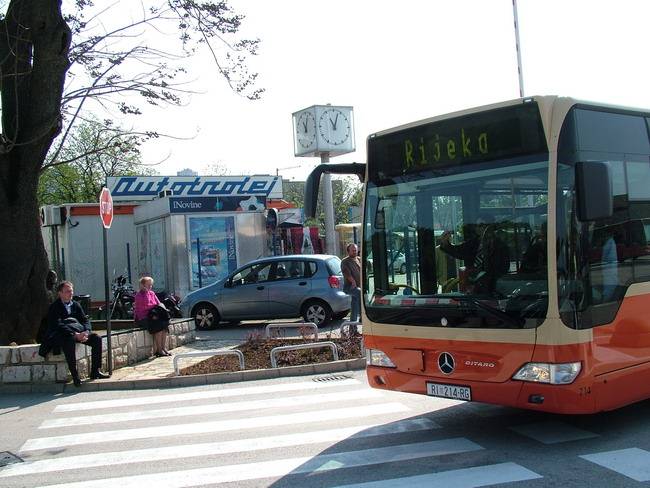
An Autotrolej bus, longtime providers of local bus services in Rijeka © Grad Rijeka
The Rijeka integrated rail and bus scheme, organised through Kvarner County, Rijeka, Matulji and Bakar Town Halls, rail and local bus operators is an eco-friendly drive that seeks to encourage people to leave their cars at home and instead choose public transport. However, access to the Rijeka integrated rail and bus network is not limited to commuting workers and travelling students. Although the scheme is most cost-effective using a monthly ticket, day tickets are available for the network which may be of huge appeal to visitors wishing to explore a wider portion of Kvarner's northern coast.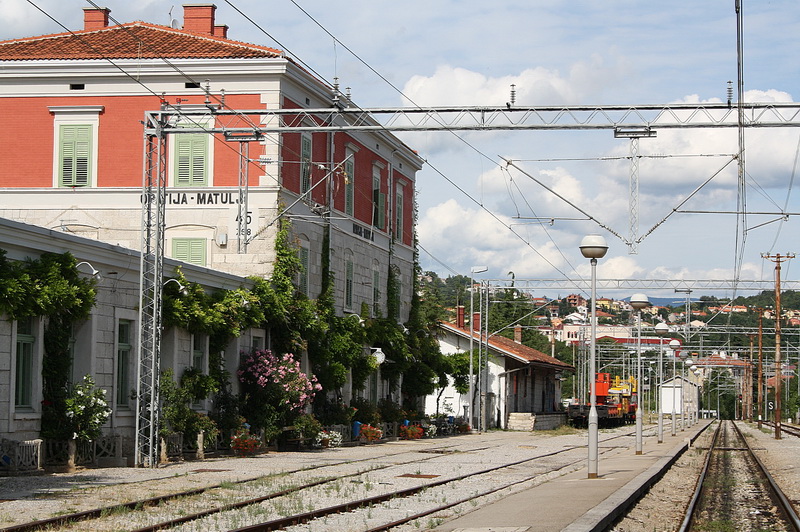
The train station of Opatija Matulji © Damir Covic 1939 / Matulji Tourist Board
Rijeka integrated rail and bus: International
What makes the extension of the Rijeka integrated rail and bus scheme even more welcome is the planned overhaul of infrastructure that will accompany it.
Fifteen extra stations will be added (or reactivated) on the route between Kantrida in the west of Rijeka, along the Rijeka seafront and on to the outskirts of Bakar. Furthermore, the entire train line from Bakar to Šapjane will be brought into the Rijeka integrated rail and bus scheme with the completion of a second train track along the route. Trains along the line at Šapjane. Next stop Slovenia! © DiningCar_
Trains along the line at Šapjane. Next stop Slovenia! © DiningCar_
Šapjane, in the municipality of Matulji, lies 20 kilometres inland, north of Opatija. It sits right on the border with Slovenia. The train line extends across this border, through the Slovenian town of Ilirska Bistrica, and then on to Postojna and Ljubljana, Italy or Austria. This means the Rijeka integrated rail and bus scheme will be directly linked to another green, international travel network.
These routes will all be linked to the incoming, double-tracked Pan-European fast train network, which, as TCN highlighted last year, will connect this part of Kvarner with France, Spain and Portugal in the west all the way to eastern Hungary via Zagreb and Budapest. Needless to say, it will require more than a single day ticket (cvikalica) from the Rijeka integrated rail and bus network to make such a journey!
Platak Ski Resort With Sea View Opened for Skiers and Sledders
January 6, 2021 – The ski season is finally open. Platak ski resort, a popular excursion and winter site on the Snježnik mountain slopes, has opened its ski and sledding tracks.
This popular ski resort located in Primorje-Gorski Kotar County is only 30 minutes away from Rijeka and about two hours from Zagreb. Also, it is only about ten kilometers away from the sea, so in the winter months, you have the opportunity to ski and sled on Platak on the same day, and then go down to the sea for lunch and a walk.
Platak is the only Croatian ski resort with a sea view, which allows visitors to enjoy two Croatian beauties at the same time – the mountains and the sea.
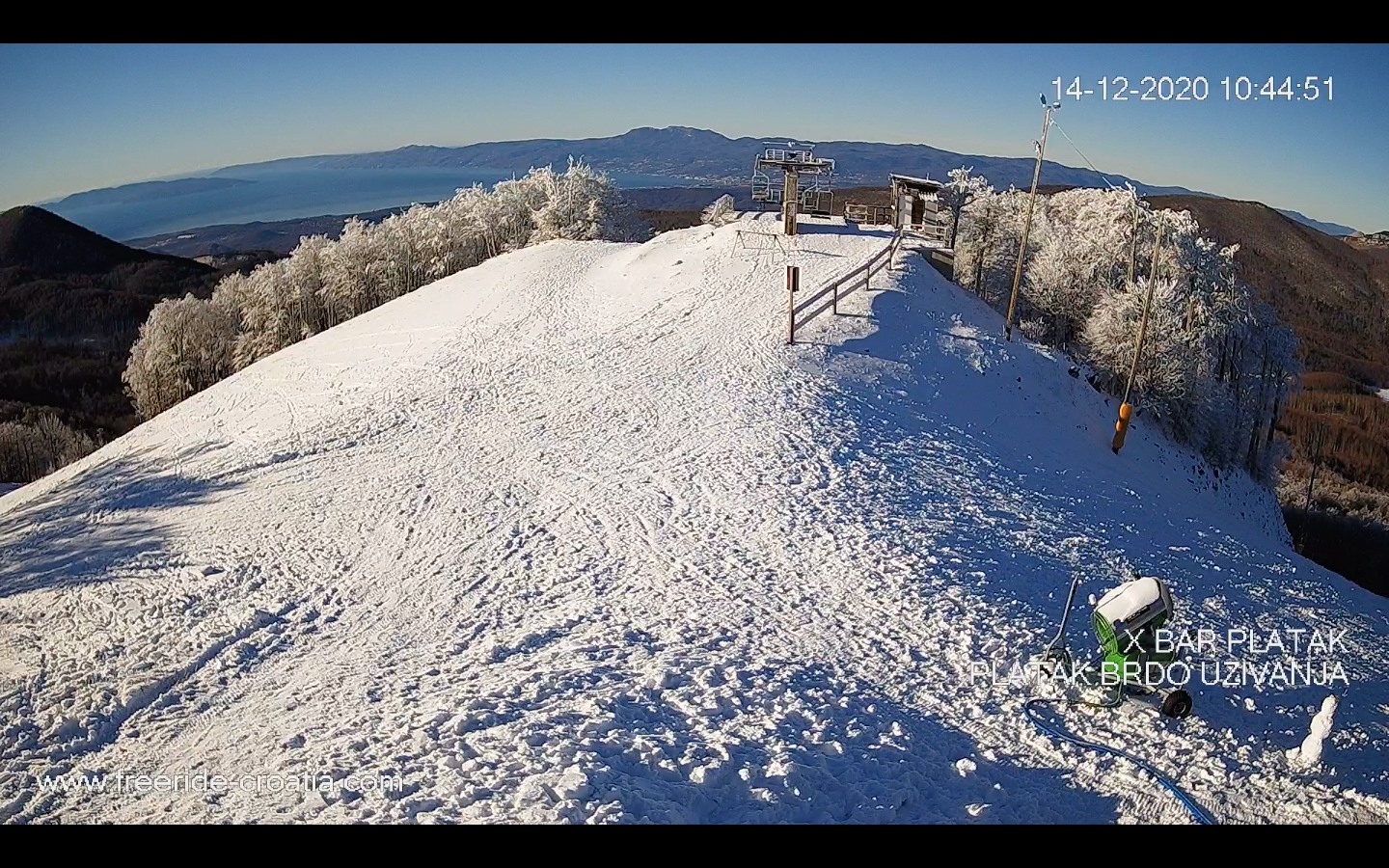
Platak on December 14, 2020. The sea can be seen in the background. / Source: Platak Facebook
As National Croatian Tourist Board reports, thanks to the new snowmaking system that the Platak Regional Sports and Recreation Center received last season, the Platak ski resort opened its doors on Saturday, January 2, 2021. Skiers can ski from 9 am to 4 pm on ski slopes Radeševo 1, Turistička staza (tourist track), and on a previously open track along the conveyor belt at the foot of Radeševo. Sledders can sled on one of several sledding tracks.
The ski season is finally open, and skiing and sledding enthusiasts have already occupied Platak. According to reports from the Primorje-Gorski Kotar County, a total of 522 tickets were sold yesterday by noon, and a large number of visitors came to enjoy sledding and walking. Also, about 40 centimeters of snow fell last night, so visitors enjoy a real snow idyll.
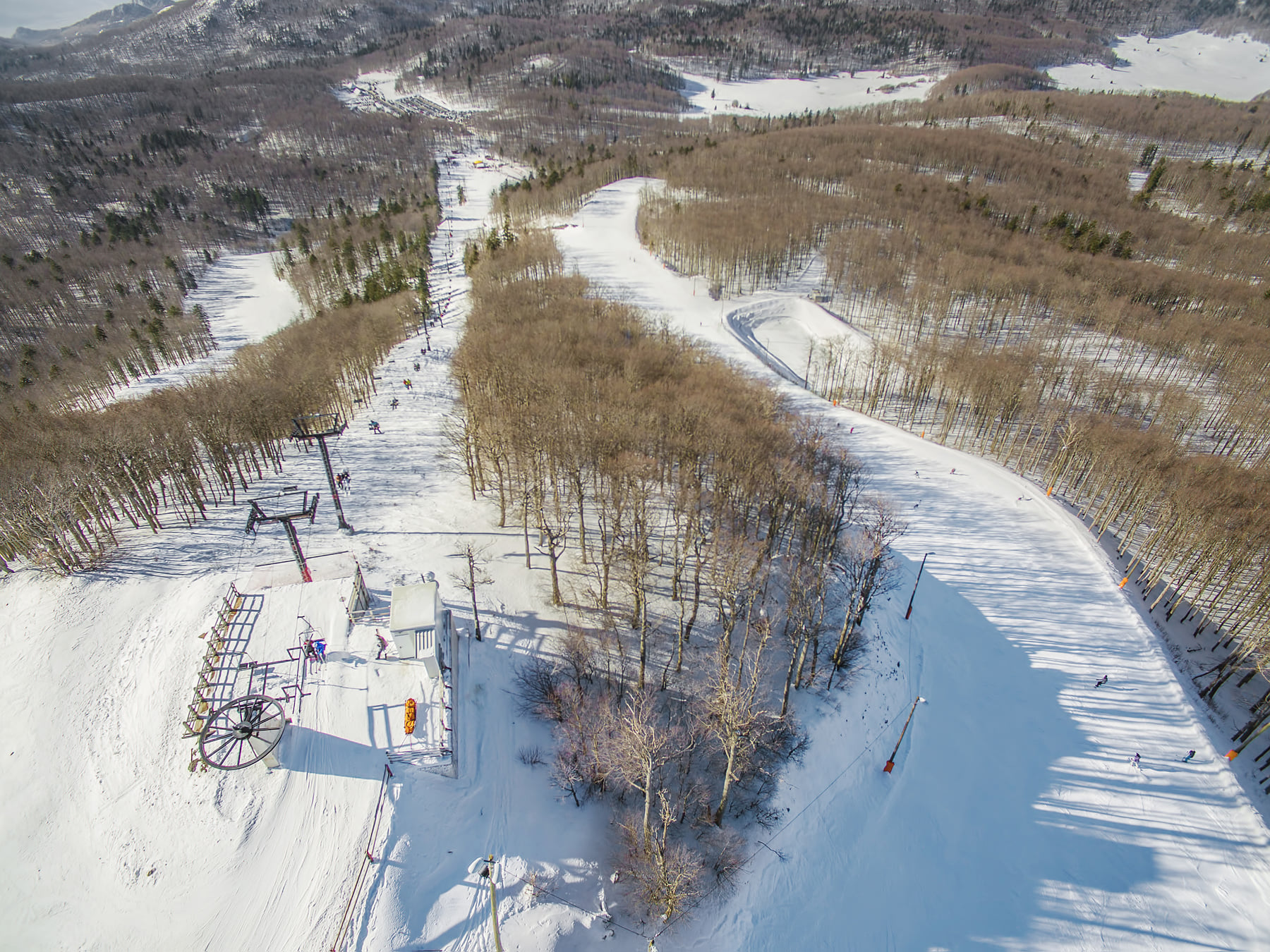
Platak ski resort / Source: Platak Facebook
You can also ride ski bikes (snow bikes) and snowmobiles on Platak's trails and forests. In order to ensure skiing for up to 50-60 days a year, a new snowmaking system worth HRK 23 million has been introduced. It includes 14 snow cannons, a new accumulation lake with 50,000 cubic meters of water, an engine room, and cooling towers.
In its unique wooded environment, the Platak Regional Sports and Recreation Center offers a handful of other facilities that can be enjoyed throughout the year. Among those are hiking trails, promenades, bike routes, unexplored paths, barbecues for rent, sports fields such as disc golf courses, bowling alleys, football fields, basketball, beach volleyball, and badminton.
There are also nine bike trails, a bike park with two trails (downhill and flowhill), and the possibility of a panoramic cable car ride.
For the latest travel info, bookmark our main travel info article, which is updated daily.
Read the Croatian Travel Update in your language - now available in 24 languages.
HRK 9.6m to Be Invested in Platak Ski Resort Next Year
ZAGREB, Dec 20, 2020 - Primorje-Gorski Kotar County will invest HRK 9.6 million (€1.28m) in the further development of the Platak ski resort next year, the County Assembly decided earlier this week.
The money will be used for the completion of snowmaking pipelines and three ski runs. The completion of the snowmaking system, installation of a new ski lift and further development of ski runs, roads and other amenities are planned for the coming years.
Under the investment plan, the County will invest about HRK 41 million (€5.4m) in the Platak sports and recreation centre by the end of 2023.
Platak is located just northeast of the northern Adriatic city of Rijeka.
Competition for Best Croatian Cities: Istria and Primorje-Gorski Kotar Counties Have Most Nominations
October 7, 2020 – This year's selection of the best Croatian cities has entered the finals and the announcement of the winners is expected at the end of this month.
We can all agree that each Croatian city has its uniqueness and is beautiful in its way. If there was a competition to pick the most beautiful Croatian city, it would be too hard to choose.
But if you consider competing categories such as quality of life, economy, education, and demographic policy, and withdrawal of money from EU funds, the picture is different.
According to Gradonačelnik.hr, out of 28 selected Croatian cities that are competing, only one big, medium, and small-sized city will be named as the best in each of these four categories, except for the EU funds. In that category, only one prize will be awarded, regardless of the size of the city.
Therefore, the epithets of the best will be taken by a total of 10 Croatian cities.
Istria and Primorje-Gorski Kotar County have the biggest chances
Croatia counts as many as 128 cities, out of which only 28 have entered the final evaluation and selection of the best.
Some of the 28 finalists in four different categories which have more than one nomination are Čakovec, Samobor, Varaždin, Dubrovnik, Rovinj, Sveta Nedjelja, Umag, Poreč, Hvar, Mali Lošinj, Novalja, Novigrad, Krk. A list of all nominated cities by all categories, as well as all other information is available on the organizers' websites.
Interestingly, the best results in this competition were made by Rovinj, Poreč, and Krk, entering the finals in three categories, in terms of quality of life, economic achievements, and the standard they provide to their residents in education and demographic policy.
If we look at the most represented counties in the final of this election, the absolute leader is Istria County with eight cities and 14 ‘nominations’ in the final election.
Only Primorje-Gorski Kotar County, with six cities and nine candidacies, and Zagreb County, from which four candidate cities and six ‘nominations’ for the best come, are keeping pace with Istria.
Also, Istria and Kvarner were last year's big winners. The best small town in terms of economic status and quality of life was Krk, Pula was the best big city in terms of economy, and Poreč was a medium-sized city with the best quality of life. In the category of education and demography, the cities of Pazin, Labin, and Cres stood out.
Many of them are nominated again this year and are defending last year's title.
Difficult criteria
The competition is organized by Jutarnji List, Gradonačelnik.hr, and the Ipsos agency. Their idea is to present to the general public the best solutions of our cities in ensuring a quality of life worthy of modern European and world standards.
Research and evaluation are very extensive, as evidenced by the fact that in the most prestigious category – that of the best cities in terms of quality of life – as many as 26 different criteria are included in the corresponding calculation.
Some of them are the average per capita income, the share of environmental allocations in the budget, the share of allocations for subsidizing the price of transportation in the budget, and the population aging index.
For the latest travel info, bookmark our main travel info article, which is updated daily.
Read the Croatian Travel Update in your language - now available in 24 languages.


